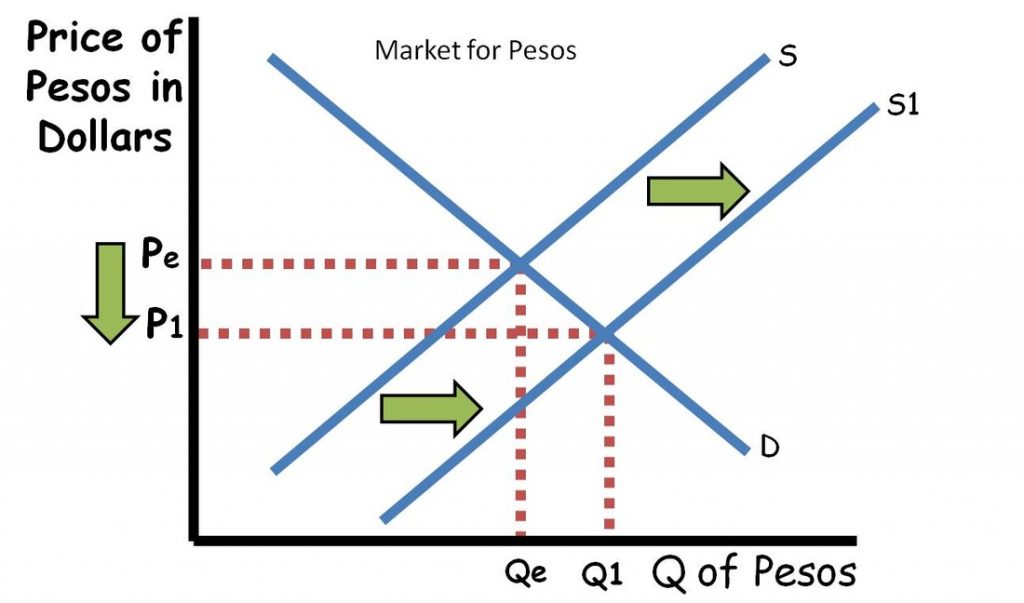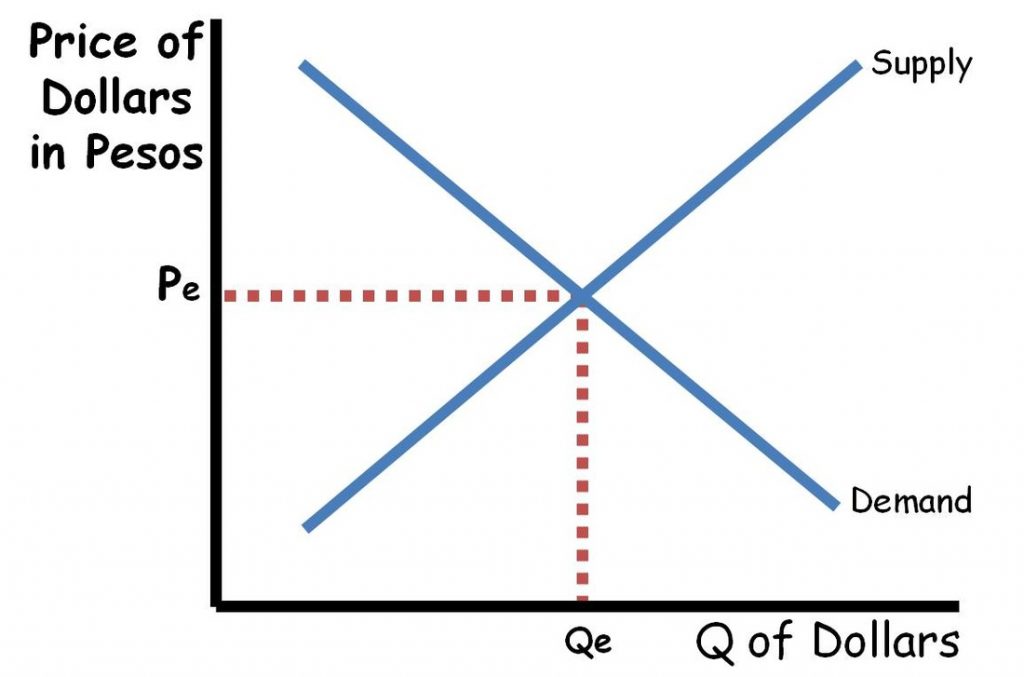Foreign exchange market and example – Delve into the fascinating world of the foreign exchange market (forex), where currencies dance and global economies intertwine. Forex trading, a realm of opportunity and risk, offers a captivating blend of financial insights and practical applications.
As we embark on this journey, we will unravel the intricacies of currency pairs, exchange rate dynamics, and the strategies employed by market participants. Real-world examples will illuminate the complexities of forex transactions, empowering you with a deeper understanding of this ever-evolving financial landscape.
Introduction

The foreign exchange market, commonly known as forex, is a decentralized global market where currencies are traded. It’s the largest and most liquid financial market, with an average daily trading volume exceeding $5 trillion.
The primary purpose of the forex market is to facilitate the exchange of currencies for various purposes, including international trade, tourism, and investment. It allows businesses, individuals, and governments to convert one currency into another to settle transactions, make investments, or hedge against currency fluctuations.
Obtain direct knowledge about the efficiency of difference between money market and foreign exchange market pdf through case studies.
Market Participants: Foreign Exchange Market And Example
The foreign exchange market is a vast and complex network involving a diverse range of participants. Each participant plays a unique role in shaping the market dynamics and contributing to its overall liquidity and efficiency.
Major participants in the forex market can be broadly classified into the following categories:
Banks and Financial Institutions
- Commercial banks: These institutions act as intermediaries between retail clients and the interbank market, facilitating currency exchange and other forex transactions.
- Investment banks: They specialize in providing advisory services, structuring complex financial products, and executing large-scale forex trades for institutional clients.
- Central banks: These government-owned institutions are responsible for managing their respective countries’ monetary policies and overseeing the stability of the financial system. They intervene in the forex market to influence exchange rates and maintain economic stability.
Non-Bank Financial Institutions
- Hedge funds: These investment funds use sophisticated strategies to speculate on currency movements and generate profits.
- Mutual funds: These investment vehicles pool funds from individual investors and invest them in a diversified portfolio of assets, including currencies.
- Pension funds: They manage retirement savings for individuals and invest a portion of their assets in foreign currencies to diversify their portfolios.
Corporations
- Multinational corporations: These companies have operations in multiple countries and engage in forex transactions to facilitate international trade, manage foreign subsidiaries, and hedge against currency fluctuations.
- Exporters and importers: Businesses involved in international trade need to convert currencies to settle payments and manage exchange rate risks.
Retail Traders
- Individual traders: These are individuals who trade currencies on their own account, using online platforms and brokers.
- Retail brokers: They provide access to the forex market for retail traders and facilitate the execution of trades.
Other Participants
- Governments: Governments intervene in the forex market through their central banks to influence exchange rates for economic and political reasons.
- International organizations: Institutions like the International Monetary Fund (IMF) and the World Bank monitor and provide financial assistance to countries facing currency crises.
Currency Pairs and Exchange Rates
The foreign exchange market operates through currency pairs, where the value of one currency is quoted in terms of another. These pairs form the basis for exchange rate fluctuations and determine the relative strength or weakness of currencies.
Exchange rates are constantly fluctuating due to various factors, including economic conditions, political events, interest rate differentials, and market sentiment. Understanding these factors is crucial for market participants to make informed decisions and manage currency risk.
Factors Influencing Exchange Rate Fluctuations
- Economic Conditions: Economic growth, inflation, unemployment, and trade balances impact currency values. Strong economic conditions tend to strengthen a currency, while weak economic indicators can lead to depreciation.
- Political Events: Political stability, elections, and government policies can affect currency values. Uncertainties or instability can weaken a currency, while positive developments can boost its value.
- Interest Rate Differentials: Central bank interest rates influence exchange rates. Higher interest rates in one country make its currency more attractive to investors, leading to appreciation.
- Market Sentiment: Market sentiment, such as risk appetite or fear, can drive currency fluctuations. Positive sentiment towards a currency can lead to appreciation, while negative sentiment can result in depreciation.
Trading Instruments and Strategies

The forex market offers a wide range of trading instruments and strategies to suit different trading styles and risk appetites.
Common trading instruments include:
- Spot FX: Trading of currencies at the current market rate for immediate delivery.
- Currency Futures: Contracts to buy or sell a specific amount of currency at a predetermined price on a future date.
- Currency Options: Contracts that give the buyer the right, but not the obligation, to buy or sell a specific amount of currency at a specified price on or before a certain date.
- Currency Swaps: Contracts to exchange one currency for another at an agreed-upon rate for a specified period.
Trading strategies vary depending on market conditions, trader’s risk tolerance, and investment objectives. Some common strategies include:
Trend Following
This strategy involves identifying and trading in the direction of the prevailing market trend. Traders use technical analysis to identify trends and enter positions accordingly.
Range Trading
This strategy involves trading within a defined price range. Traders identify support and resistance levels and look for opportunities to buy near support and sell near resistance.
You also will receive the benefits of visiting foreign exchange market questions and answers today.
Scalping
This strategy involves making numerous small profits by entering and exiting positions quickly. Scalpers typically use high leverage and focus on short-term price movements.
Carry Trading
This strategy involves borrowing a currency with a low interest rate and investing it in a currency with a higher interest rate. The profit comes from the difference in interest rates, known as the carry.
Market Analysis

Market analysis is a crucial aspect of forex trading, enabling traders to make informed decisions based on a comprehensive understanding of market dynamics. By analyzing market data, traders can identify trends, predict price movements, and adjust their trading strategies accordingly.
There are two primary types of market analysis: technical analysis and fundamental analysis. Technical analysis focuses on historical price data to identify patterns and trends, while fundamental analysis examines economic factors and geopolitical events that may influence currency values.
Technical Analysis
- Examines historical price data to identify patterns and trends.
- Employs technical indicators, such as moving averages, Bollinger Bands, and Fibonacci retracements.
- Provides insights into potential price movements based on past behavior.
Fundamental Analysis
- Analyzes economic data, interest rates, and political events to assess their impact on currency values.
- Considers factors such as GDP growth, inflation, unemployment rates, and central bank policies.
- Provides a broader understanding of market drivers and long-term currency trends.
Risk Management and Regulation
Risk management is crucial in forex trading to protect capital and maximize profits. It involves identifying, assessing, and mitigating potential risks associated with currency fluctuations and market volatility.
The forex market is regulated by various authorities worldwide to ensure transparency, stability, and investor protection. These regulations include guidelines for market conduct, capital requirements for brokers, and reporting obligations.
Discover more by delving into structure of foreign exchange market ppt further.
Risk Management Techniques
Traders employ various risk management techniques to minimize losses, such as:
- Stop-loss orders: Setting pre-determined levels to automatically exit positions when losses reach a specific threshold.
- Take-profit orders: Placing orders to close positions when profits reach desired targets.
- Hedging: Using offsetting positions in different currency pairs to reduce exposure to a single currency’s fluctuations.
Regulatory Framework, Foreign exchange market and example
The regulatory framework for the forex market varies across jurisdictions. Major regulators include:
- Commodity Futures Trading Commission (CFTC) in the United States
- Financial Conduct Authority (FCA) in the United Kingdom
- Swiss Financial Market Supervisory Authority (FINMA) in Switzerland
These regulators enforce rules and regulations to prevent market manipulation, ensure fair trading practices, and protect investors from fraud and abuse.
Examples of Forex Transactions
Forex transactions are essential for international trade and investment. Here are some real-world examples to illustrate the process:
Example 1: Importing Goods from China
An American company imports goods from a Chinese supplier. The Chinese supplier invoices the company in Chinese Yuan (CNY). To pay the invoice, the American company must convert its US Dollars (USD) into CNY. This transaction involves buying CNY and selling USD on the forex market.
Example 2: Investing in a Foreign Stock
An investor in the UK wants to buy shares of a Japanese company. The Japanese company’s shares are traded in Japanese Yen (JPY). To make the purchase, the investor must convert GBP into JPY. This transaction involves selling GBP and buying JPY on the forex market.
Example 3: Traveling Abroad
When traveling abroad, you need to exchange your local currency for the currency of the country you’re visiting. For example, if you’re traveling from the US to Europe, you would need to exchange USD for Euros (EUR). This transaction involves selling USD and buying EUR on the forex market.
Last Point
The foreign exchange market, a dynamic and interconnected ecosystem, presents a wealth of opportunities for traders and investors alike. By embracing sound risk management practices and leveraging market analysis techniques, participants can navigate the complexities of forex trading and harness its potential for financial success.
As we conclude our exploration, remember that the forex market is a constantly evolving tapestry, influenced by global economic events and geopolitical shifts. Staying abreast of market trends and adapting strategies accordingly is crucial for thriving in this ever-changing environment.
